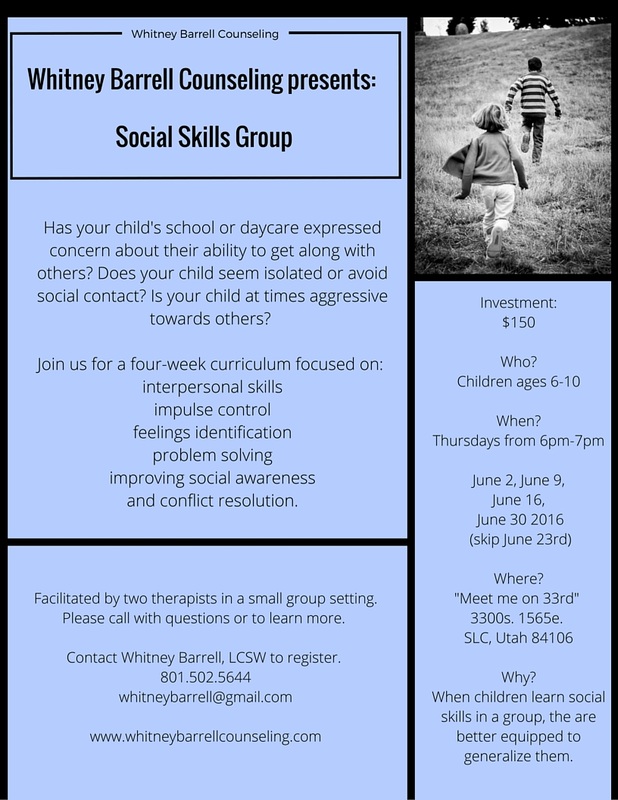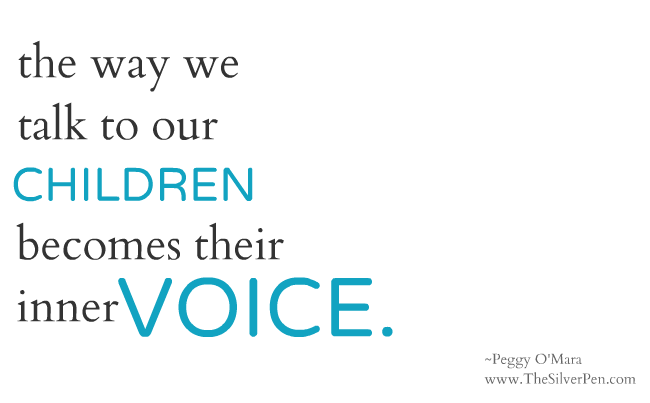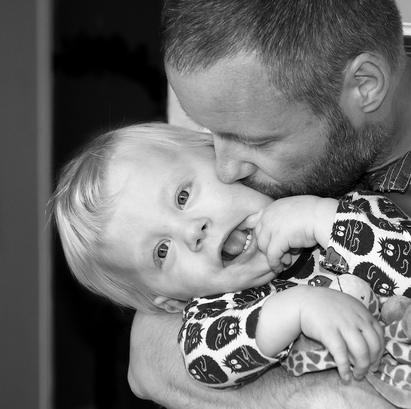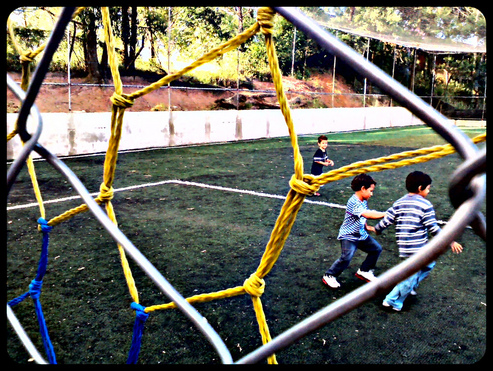|
Developing Confidence or self-esteem is often a topic in sessions with teens. In a developmental stage where they are forming their identity, values and becoming more and more aware of the complexity of human relationships it's a topic we often circle back to. But, as a therapist I find it's a slippery one, a concept that doesn't lend itself to explanation. This video, along with it's practical tips is well done. Take a look, for yourself, or for your teen. Lesson made in partnership with the Always #LikeAGirl campaign, animation by Kozmonot Animation Studio. I am very, very excited to announce a collaboration a colleague and I have been working feverishly on. Shannon Hickman is a fellow clinical therapist who specilizes in sex therapy. In her private practice she treats couples dealing with a myriad of issues related to sex, intimacy and their implications.
Shannon and I are both new mothers. We starting talking about how important it is to us that our girls feel comfortable in their bodies, think about and experience sex without shame and get their information from us (rather than rumors and school yard pals). So, we started digging into the research about how to ensure this happens. Lucky for you, we've distilled all of this down into a parenting series that we're offering to parents who feel as passionate about this issue as we do. We plan to discuss how our own thoughts about sexuality have the tendency to bias our discussion with our kids, we will talk about age- appropriate sexual development, break down the nitty gritty on just how to share information about sex and cover any other questions you can conjure up. It's going to be a great time, join us. If you're interested in a little taste, check out the KSL article we wrote to give you an idea of where were headed. Beyond the Birds and the Bees: Discussing Healthy sexuality with your child. By Shannon Hickman, LCSW and Whitney Barrell, LCSW First published by KSL July 29, 2015 Most parents tend to dread, or at least feel intimidated by, having “the talk” with their child. There are a myriad of resources discussing what topics to introduce at which age, and what is characterized as normal sexual development. The National Child Traumatic Stress Network offers a comprehensive outline of healthy sexual development. But, what we’d like to offer is a broader view of this “talk,” and some factors to consider. Parents typically think of the “talk” as discussing sexual intercourse in a framework of how children are conceived. Rather than just focusing on the mechanics of how babies are born, consider broadening the discussion based on the child’s age and ability to understand concepts. No one knows your child better than you do, and as parents, your deep love and connection to your child makes you the best person to talk with them about sex. Before talking with your child about sex, think through your own values about the role of sex in a relationship, healthy sexuality, what you want your child to understand about their body, and how you want them to feel about their body and their sexuality. Think back to your own experience when learning about sex and intimate relationships and how your parents or others discussed this topic with you. Are there important values or standards that you want to impress upon your child? Consider the biological, emotional, social, relational and spiritual aspects of sex and how your beliefs and values fit into these areas. Was the way your parents shared this information with you successful? Is there something you’d like to do differently? -Healthy Sexuality Often children grow up viewing sex as a physical gratification rather than equating it to love and fulfillment. It is important to remember this is not a one time conversation. It is an ongoing topic of discussion and the more open the child can be, the more support a parent can provide in helping to positively shape their child’s sexuality. With our children being bombarded daily in the media with sex and sexual images, it is more important than ever to help them to develop healthy attitudes about their bodies and sexuality. -Attitudes Identifying your own beliefs and attitudes about sex ahead of time will allow you to work through some of your own anxieties prior to having the discussion with your child. We as adults have often developed unhealthy attitudes about our bodies and sex that may affect the way we communicate with our child during discussions about these topics. -Practice Most parents feel a degree of anxiety in discussing sex with their children. Examine what makes you anxious: is it talking about a private topic; is it that you don’t feel prepared? Keep in mind that the tone or level of anxiety will convey more about how you feel about the topic than the actual content you share. If you want to exude acceptance and openness, make sure your face, and body positioning also conveys this. Plan out what you’d like to tell your child and choose words that feel comfortable for you. -Conversation starters Using everyday life to bring up topics of sex and sexuality are typically the best way to proceed. If you see something on TV with your child that feels like a “teachable moment,” take it. You might ask, “what do you think about all of that?” Focus on what questions they are asking. If your child asks “where did I come from?” He may just be asking which hospital he was born in? Clarify the specific question, then answer it as succinctly as possible. Follow up with “did I answer your question?” Follow their lead. Also consider the importance of strengthening your relationship through special times and activities that promote heartfelt sharing and connection. -Avoid metaphors. Young children are concrete thinkers. Metaphors tend to complicate things. If you are talking about specific body parts or functions of body parts, be as direct as you can, while also keeping in mind the child's developmental stage. It is helpful to use the appropriate names for body parts. This helps the child to begin to understand they do not have to be ashamed or embarrassed about any part of their body. This approach will begin to set the foundation for positive body image and healthy sexuality. -It’s not one talk, it’s many. Rather than sitting down with your child once they reach puberty to talk with them about sex, consider starting early and building on the depth and complexity of this topic. Identify an end goal. Parents may want their child to grow into an adult who is capable of an intimate relationship without feeling ashamed. If this is your goal, work backwards, expounding on experiences and discussions to support your goal. Consider the use of tools such as age appropriate books to help guide you in your discussions. Shannon Hickman, LCSW is a trained sex therapist. Whitney Barrell, LCSW specializes in child therapy. Together they are leading a parenting series on how to talk with your child about healthy sexuality. Beyond the Birds and the Bees
Parent Education Series Sex. Wondering how to discuss it with your children? Wondering how your own experiences are shaping the conversations with your child? Want to know what is normal, healthy sexual development and when to be concerned? Want to ensure that sex doesn't become shameful or embarrassing? Do you want your child to talk to you first? No one knows your child better than you do, and as parents, your deep love and connection to your child makes you the best person for the job. Join us! Shannon Hickman, LCSW a trained sex therapist, will be sharing her expertise on healthy sexuality. Whitney Barrell, LCSW who specializes in child therapy, will focus on child development and the use of parent-child relationship to foster healthy development. Topics include:
Who: Parents of children ages 3-17 When: Monday July 13th AND Monday July 20th 7:00pm-8:30 pm. Cost: $200 per couple/individual Where: South Valley Therapy 8537 S. Redwood Road, Suite A, West Jordan, UT 84088 Click HERE to sign up. Shannon Hickman, LCSW holds a Master's Degree of Social Work from Rutger's University and has a private practice in Taylorsville, Utah where she specializes in couples counseling and sex therapy. As a trained sex therapist she is able to help with a variety of concerns related to sexuality and intimacy. Whitney Barrell, LCSW holds a Masters of Social Work degree from the University of Utah and maintains a private practice in the Salt Lake City, Utah. She works mainly with young children and their families on mental health issues and is focused on and improving family relationships. Parenting is the most demanding job we’ve got.
Most parents aren’t making deliberate decisions about what skills they need to possess to be the best parent; rather they are ensuring teeth are brushed, homework is done, and talking with children about their ideas and goals — which turn out to be important parenting skills. Parenting absorbs us; it’s hard to get an objective look around. We don’t often rely on science to guide our parenting decisions. It’s more likely that we consider the type of parents our parents were, and either duplicate the parts we felt were effective, or turn the other direction entirely. Women talk with their girlfriends about discipline or choosing a good school. Men trade stories about their children and their relationship with them. We ask the pediatrician, and we notice the skills other parents utilize at the park and we integrate them into our routine. We Google. We read parenting books. And when we’ve done all of that, we realize how much contradiction exists. Dr. Robert Epstein has done the legwork for us. He’s compiled a list of 10 parenting competencies that are predictive of good outcomes. In this case, good outcomes for children are defined as a child's success, health and happiness, as well as the quality of the relationship between parent and child. Eleven parenting experts evaluated the 10 competencies identified, and data was collected from over 2,000 parents who identified both the outcomes of their children (health, happiness, success) and how closely they parented related to the 10 competencies. Using this data, Epstein ranked what competencies had the most impact down to which had the least:
Love and affection Love and affection tops the list. The one-on-one time we spend supporting our child has a direct impact on his or her degree of happiness, health and success. Parents are powerful. Stress management and relationship skills Interestingly, competencies ranked No. 2 (stress management) and No. 3 (relationship skills) are factors that don't involve our child directly. How a parent manages stress and the skill he or she possess in relating to other adults aren't typically considered parenting skills. But, as we see from where they rank, are factors of high importance. Mothers and fathers in healthy and satisfying marriages are more engaged in their roles as parents and have more positive attitudes toward their children. Frequent and intense conflict, on the other hand, is associated with unresponsive and insensitive parenting.–Urban Institute Stress management is a measure of how well a parent manages his or her stress. If a parent can rely on healthy ways to minimize stress, he or she is more accessible to the children and has more time for love and affection. This finding dovetails with what we know about maternal depression and its impact on children. When mothers are depressed when their children are young, they may be fighting to manage basic care-giving tasks (food, hygiene, etc) and don't have the energy for important bonding that takes place early on. Regardless of a child's age acting as a role model by caring for yourself, will pay off for the entire family. Relationship skills reference a parent's ability to communicate and compromise, whether he or she is parenting in the same household or co-parenting due to divorce or separation. Children show improved outcomes when parents are able to speak kindly to one another and model healthy relationship skills. Prolonged exposure to high conflict between parents has an impact on children's psychosocial development. Research by the Urban Institute goes further, reporting, "Mothers and fathers in healthy and satisfying marriages are more engaged in their roles as parents and have more positive attitudes toward their children. Frequent and intense conflict, on the other hand, is associated with unresponsive and insensitive parenting." Life skills Life skills are another domain where parents have a degree of control. Epstein defines life skills as one's "ability to provide for your child, have a steady income and a plan for the future." As we can see, many of these competencies are intertwined. Those who are financially stable have one less thing to worry about and one less stress to manage. Behavior management Behavior management is likely the competency most fuzzy for parents. There are myriad opinions on the best way to diffuse conflict with our child, or ensure that he or she complies with our requests. Recently, advances in neurosciencehave shed some light on this topic. We know that when a child is hyper- or hypo-aroused, he or she is unable to participate in problem-solving or skill-building. The good news is, despite all the contradiction in how to best discipline our child the approach we use isn't as important as it may feel. Besides, this competency falls in the lower third of the list. Religion Religion makes a surprising appearance on the parenting skills list. One theory is parents who support or encourage spiritual development may be a part of a broader religious community that provides support for the family spiritually and informally, and that leads to improved outcomes. Figuring it all out Parenting often feels sandwiched between guilt and shame. Being a parent seems to be a very public display of one's skills and abilities when this isn't the case. All parents, regardless of outside circumstances, desire for their children to be happy and healthy. How we progress toward that goal is determined by our history, values, experiences and opportunity. Among this list of 10, there is undoubtedly a place where we "have it down." If one is interested in testing where he or she falls among the 10 competencies, Epstein's website has a skills test that will assesses a person's strengths and provide feedback. First published by KSL on May 24, 2015. https://www.ksl.com/?sid=34582765&nid=1009&title=parenting-skills-the-top-10-suggestions-for-raising-happy-children&s_cid=queue-5 Welcome! Don't want to take the time and cognitive skill to read Debunking Adoption Myths? (Me neither!) Now you've got the option to put me in your ears! I was invited to speak with Kelly Ellison on her podcast, Your adoption Coach, to discuss the myths of adoption. A subject near and dear to my heart, and largely misunderstood. First featured on KSL, read on to have your myths debunked--or if you are an adoptive parent, read on to feel some validation about the experience you know so well.
Adoption is mysterious to many of us; we’ve relied on Lifetime movies and anecdotes of the most rare situations in adoption to define it. As a result, there are many myths that swirl around adoption and, as always, the truth is somewhere in the middle. The information that follows is applicable to domestic and foster care adoptions, rather than international adoption. The birth mother/father can show up at any time and take the child. False. Once the adoption is finalized, the child’s adoptive parents are recognized by law. Post-adoption revocation is very rare, but these cases do gain publicity, which further perpetuates the myth. According to Utah law, the birthfather can sign relinquishment papers at any time, including before the birth of the child. The birthmother may sign relinquishments 24 hours after the birth of the child. Most ethical adoptions are agreed on by birth parents who have made a very sacred decision that they feel is in the best interest of their child. Birth parents are troubled teens and not to be trusted. False, false, false. On average, birth parents are in their 20s. Typically, birth parents choose adoption because they don’t have the means — financially, emotionally or otherwise — to parent the child. This factor doesn’t make a person dangerous or untrustworthy. Consider the amount of trust a birth parent gives an adoptive couple in order to choose them to raise their child. Open adoption (where the adoptee has identifying information about their birth family, and the birth parents choose adoptive parents) is emotionally harmful to the child. False. Open adoption takes away the mystery. When adoptive parents are able to share information about the child’s birth parents and their history, the children understand their beginnings and they understand why a placement decision was made. According to a study completed by the Minnesota/Texas Research Project, birthmothers involved in open adoptions had lower levels of adoption-related grief and loss than compared with those involved in a closed adoption. The study points out "adopted adolescents was no different in levels of adjustment from the national norms. Level of openness by itself was not a major predictor of adjustment outcomes at Wave 2. However, relationship qualities, such as collaboration in relationships and perceived compatibility, were predictive of adjustment across openness levels." Open adoption is like co-parenting. False. Birth and adoptive parents do not share custody. Adoption outlines distinct roles. Open adoption allows for the child to have an ongoing relationship (of some level) with birth parents. Some birth parents report having an aunt/uncle-like relationship with the child. Same-sex parents are not capable of providing a healthy environment for a child. False. Years of research by the Donaldson Adoption Institute has proven that children parented by same-sex or heterosexual couples have the same outcomes, happy and healthy. The racial background of most children in foster care is that of a minority. False. According to the most recentKids Count data, 46 percent of foster children are white, 26 percent are black, 21 percent are Hispanic and the remaining 9 percent are multiracial. Adoption is born of loss. True. Adoption is sometimes the best-case scenario for the birth parents, who aren’t ready to parent; the adoptive parents, who have sometimes been waiting many years to parent; and the child, who is provided a safe, stable home. Despite this, adoption occurs because of a loss — a child's loss of biological parents and the loss of connection to their history. As an adoption community we don’t do anyone any favors by glossing over this fact. Adoption is expensive. True and False. Adoption from foster care can cost little to nothing. Information from the Child Welfare Information Gateway cites domestic adoptions can range from $5,000 to $30,000, and international adoption can cost $15,000 to $30,000. These fees are paid to social workers, attorneys and a small amount (as determined by each state) can be used for birth parent expenses such as rent, maternity clothes, etc. Birthparents are not paid for the adoption. Adoptive parents must be “perfect” to pass the home study. False. Adoptive parents must prove that they can provide financially and emotionally for the child. They are asked about their relationships with family and spouse, employment, plans for when the child arrives and understanding of adoption. Most adoptive parents pass the home study process. Waiting to tell my child he or she was adopted until they can understand is better for them. False. History has been a guide for us in this domain. Historically, adoptions were closed. Because of this, it was easier (and expected) for adoptive parents not share information about their child's origins at all — or if so, later in life. Due to the research on open adoption, we now know that children who are provided information about their birth family early on fare better in the long run emotionally. Same-sex parents are not capable of providing a healthy environment for a child. False. Years of research by the Donaldson Adoption Institute has proven that children parented by same-sex or heterosexual couples have the same outcomes, happy and healthy. If I don’t talk to my child about their racial identity (if it's different from my own) then it won’t be an issue. False. Children adopted transracially need special attention in order to achieve positive formation of their racial identity. Again, the Donaldson Adoption Institute has found “positive racial/ethnic identity development is most effectively facilitated by 'lived' experiences such as travel to native country, attending racially diverse schools, and having role models of their own race/ethnicity.” Adoption has always been a way to build families, although in the past two decades, our understanding of best practices for all members of the triad has increased. As this understanding shifts, so does public misunderstanding. Adoption stories and experiences are as diverse as they come, because an adoption experience is a human experience. We use social skills in a broad sense every day. In a work environment sometimes referred to as soft skills, they enable us to work as a team, practice empathy and relate to others. Social skills are learned. We are born seeking relationships, seeking interaction, but it’s through practice and watching others that we learn how to implement social skills. Elementary school age children are the perfect example that these skills are learned, we see them practicing them every day. We see children bullying others or learning to compromise. The playground is a great big mixing bowl where kids can learn which skills will serve them and which won’t. Social skills are needed not only on the playground, but at soccer practice, in school, visiting grandparents and at the park. There are four skills sets that, if mastered, tend to promote healthy relationships in the long term. Research gathered by the Center for Parent Information and Resources found that when addressing social skills, successful interventions have some things in common. For example, the interventions focus on reflection and self awareness. Secondly, when children are walked through each step in the new skills, they are better able to retain and generalize it. When role-playing is used or specific skills are practiced in a group environment, children are able to master the skills. You will see these principles built into the suggestions to use for your child. Making and keeping friends It’s adorable to see young children walk up to one another at the park and confidently say, “Hi, my name’s Jack, do you want to play?” This is an example of a child who has been taught the social script for making an introduction. From here children learn to build by asking others questions, or inviting others to join in play with them. The ability to make and keep friends relies on a child’s ability to empathize, see things from another’s perspective and compromise. Young children are naturally egocentric, this is a normal developmental stage. Around age 4, children develop what is referred to as theory of mind, the understanding that others may have a belief, intention or knowledge that is different than their own. This is a developmental leap that allows them the capacity to engage in more meaningful friendships. If your child is struggling with this skill, you may put on your detective hat and do some observation while your child is at play. Is he isolating himself, hesitant to join others? Once he begins engaging with others, does he tend to become bossy and set the rules of the game? When you see one of these things happening, pull your child aside and say something like, “I noticed when you told Abby that she wasn’t playing the game right, she frowned and walked away. What do you think she might be feeling?” Continue to process this event with your child and help your child problem solve a way that will lead to the interaction the child wants. Encourage your child's ability to take the perspective of the other child and find a solution that works for everyone. Emotional regulation Emotional regulation is an umbrella for important skills such as impulse control and identifying and expressing feelings appropriately. If a child is consistently losing control and acting aggressively toward peers, that child is often ostracized and avoided. Impulse control plays a role in friendships. A child who is able to wait his turn or stay calm enough to be in a conversation with peers is more socially adept. Gaining emotional regulation begins with identifying emotions. You can encourage your child to notice changes in his body, for example, fists tightening when he is feeling anger. In order to regulate these strong emotions, the child first needs the ability to identify them. Once a child is able to pause between noticing a strong emotion and reacting to it, he can make a more calculated decision. Modeling this behavior for your child is often the best teaching tool. If you begin to become frustrated, you might say out loud, “I’m starting to get upset, I am going to sit down and take a few deep breaths.” This will show your child that each of us is responsible for managing how we feel and that even adults need a break sometimes. Sportsmanship Team sports are an excellent setting to practice social skills. Children are required to work together, handle disappointment and take turns. If your child is struggling with social skills it’s a good idea to encourage a team sport, that way she will have a consistent chance to practice improving her skills. Sometimes poor sportsmanship is rooted in a child's anxiety about her performance. Perhaps if she misses a shot she feels embarrassed or she is sensing underlying pressure from family members to succeed. Before she can improve her social skills in this area, she needs to be free of such barriers. Visualization and self-talk are good skills to practice if your child struggles with poor sportsmanship. Identify the triggers. For example, does your child lose control when the team loses? If so, review what self-talk might be occurring. Is she telling herself something like “you are the worst, you’ll never win.” Suggest an alternative, such as, “We didn’t win this time, but I played my best.” Refuting self talk takes practice. Use visualization by walking your child through what thoughts and feelings she may feel when the team loses, prompt her to use positive self-talk and visualize herself maintaining control. Conflict resolution Conflict resolution is another skill that is impacted by maturity. Our ability to use higher-level thinking such as planning and problem-solving doesn’t develop in our brains until we are well into our 20s. Despite this, elementary school age children can practice skills that will aid them in relationships. It is very common for children to struggle with ways to address conflict. Some children lack the confidence and skills needed to advocate for themselves, and as a result are stepped on by other children more willing to assert their wishes. Conversely, some children may bully others or use aggression to get their needs met. Keep in mind all of these skills are learned. Our expectation that children should always be seeking the most fair solution for everyone isn’t realistic. Compromising is a skill that is important if you live in a society that values cooperation. It isn’t in our DNA to solve problems peacefully, but it is “nurtured” into us. Improving conflict resolution relies on a child’s ability to hone the previously noted skills, of empathy, emotional regulation and good sportsmanship. This skill is most effectively addressed right when the conflict is occurring. This is the aim of social skill groups facilitated by play therapists. But you can also practice this skill with your own child. When conflict occurs between siblings or friends, consider asking the child to take a break for a few minutes to calm down if the conflict has risen to an aggressive level. Afterwards, practice talking through the thoughts and feelings the child had during the event and challenge the child to identify thoughts and feelings the other child may have felt as well. Prompt the child to consider an alternative, for example, rather than hitting and taking a toy, suggesting asking an adult for help, or finding another toy to play with. The barrier to conflict resolution without aggression is often impulsivity. If you can stop the child from acting out and walk through her choices, (and practice this over and over again), she will have a much better chance of doing it on her own. I often consider these social skills as life skills. They are the foundation of all relationships. Each interaction you have with your child has the potential to teach the child pro-social ways of interacting. We know that the playground can sometimes be the Wild West of childhood. But children who are able to navigate it effectively will be ready for the workforce — the Wild West of adulthood. Few things are more exciting to me then when "good parenting" is validated by science! Perhaps it's a throw-back to my early interest in chemistry and fascination with Albert Einstein. Even if science isn't your thing, if you are a parent, this information will be of interest to you. Read on.
Isn’t it great when science validates something we intuitively know? Such is the case with Dr. Michael Meaney, a professor of McGill University with an interest in maternal care, stress and gene expression. In the Annual Review of Neuroscience he published work centered on the natural variation he noticed in licking and grooming by mother rats. He found that the kind of care that mother rats provide to their offspring alters genes responsible for stress response. The rat pups who experienced more licking and grooming were identifiable by the anatomy of their brain. When Meaney followed the rat pups into adulthood he found that those who were licked and groomed were better at completing mazes and even lived longer. The mechanism at play is that those pups who were licked and groomed produced fewer stress hormones when faced with a challenge. This is important, because he know in humans, when our brains are bathed for too long in stress hormones we are always “on alert,” anxious and exposed to an increased risk of mental health issues, heart disease or diabetes. We want our stress hormones to kick in when we are in danger, then dissipate. The licking and grooming provided to rat pups served as a protective factor and prepared them to manage stressors into adulthood. What to parents of rats and parents of humans have in common? The capacity to provide affection and physical touch to their offspring. Dr. Meaney uses the implications of his work to note “Women’s health is critical. The single most important factor determining the quality of mother-offspring interactions is the mental and physical health of the mother.” This is true regardless if the primary caregiver is a mother, father or even grandparent. In subsequent research Dr. Meaney paired mothers who scored high on licking and grooming with rat pups who were not their biological pups and the outcome was the same. We have opportunities daily to engage with our children in a way that will better prepare them to ride the wave of adulthood in an emotionally healthy way. What does licking and grooming look like when you are in parenting a human rather than a rat? Good question. Many of the things you are already doing, for example, lotioning your child after a bath, playing patty-cake or “this little piggy.” Theraplay is a clinical intervention focused on building attachment between parents and children. One of the domains of focus is nurture, which is all about physical touch and expressing to the child “you are worthy of good care.” Some Theraplay activities include lotioning, which can be used as a variation for an older child. Start by placing dots of lotion along the child's arms, or face and slowly rub in each dot. Creating a secret handshake with your child. Giving your child and manicure or pedicure with a focus on physical touch and nurture. Face painting, a thumb war, mirroring, peek-a-boo. Using your finger to draw letters on your child’s back and see if they can guess the word. Create a variation of a song for your child, Theraplay uses Twinkle Twinkle Little Star, with a twist “Twinkle Twinkle Little Star, what a special boy you are, dark brown hard and soft, soft cheeks, big green green eyes from which you peek…. As you can see many of these activities are built into the way we interact with children already. By being conscious to include them in your daily routines you and your child will benefit. So, the next time you snuggle a newborn, or force your third grader into a hug, feel proud that you are having an impact--on a cellular level. **This was first published by familyshare at: http://www.familyshare.com/Parenting/biochemistry-of-good-parenting. |
Archives
March 2024
Categories
All
|









 RSS Feed
RSS Feed